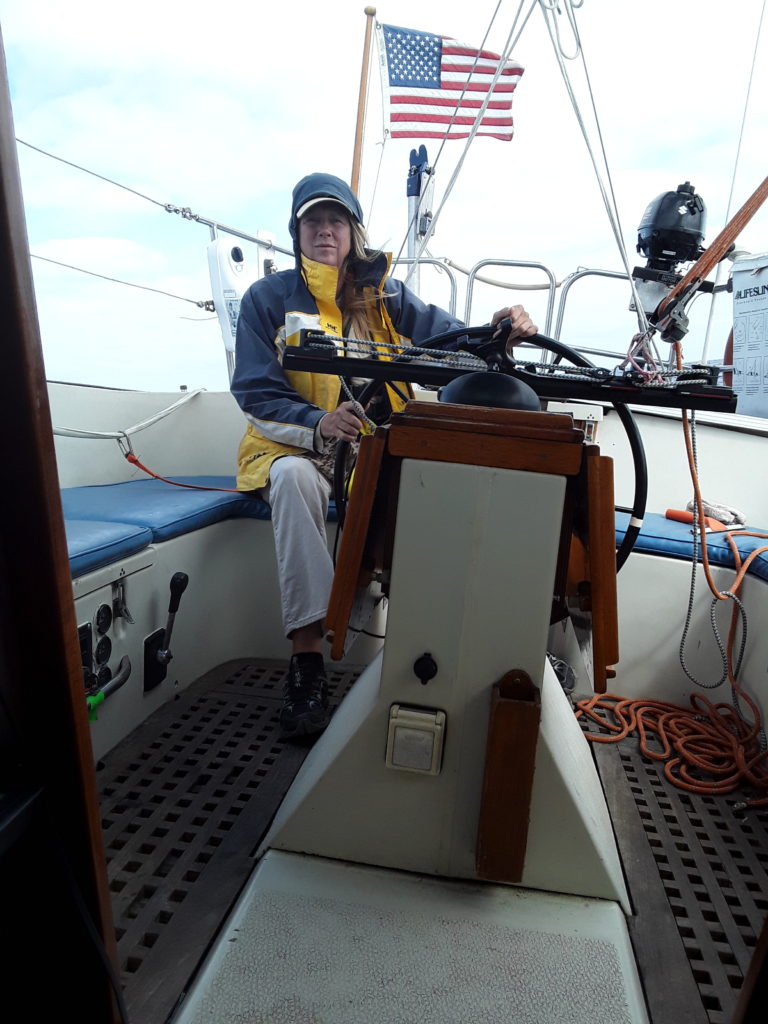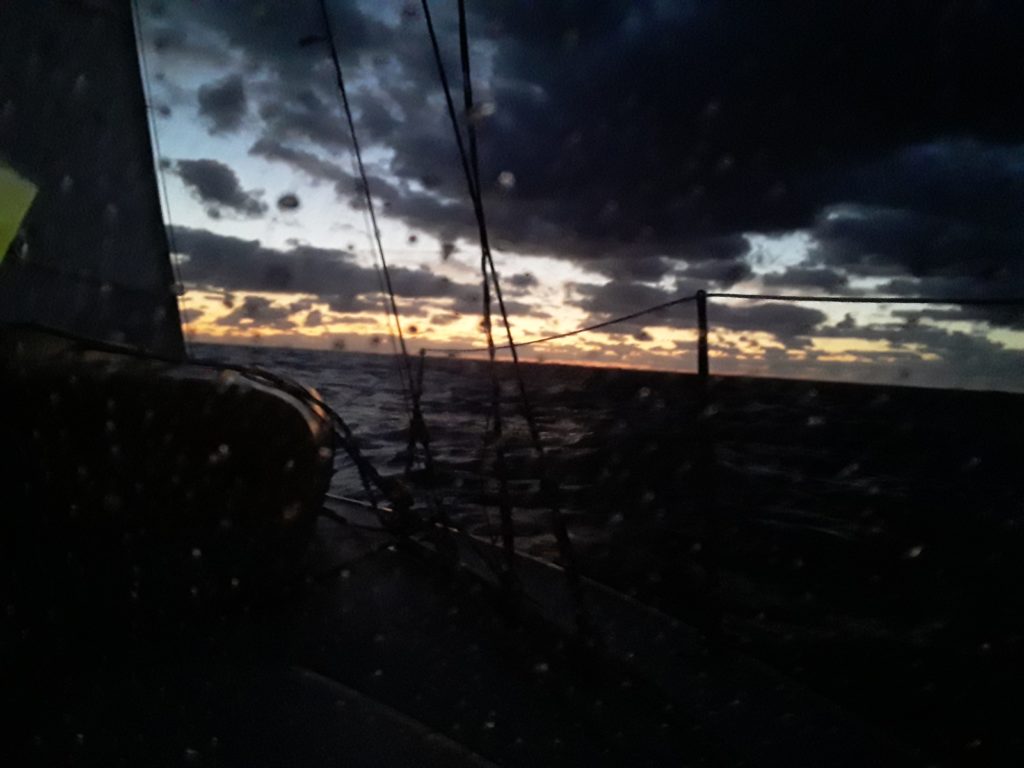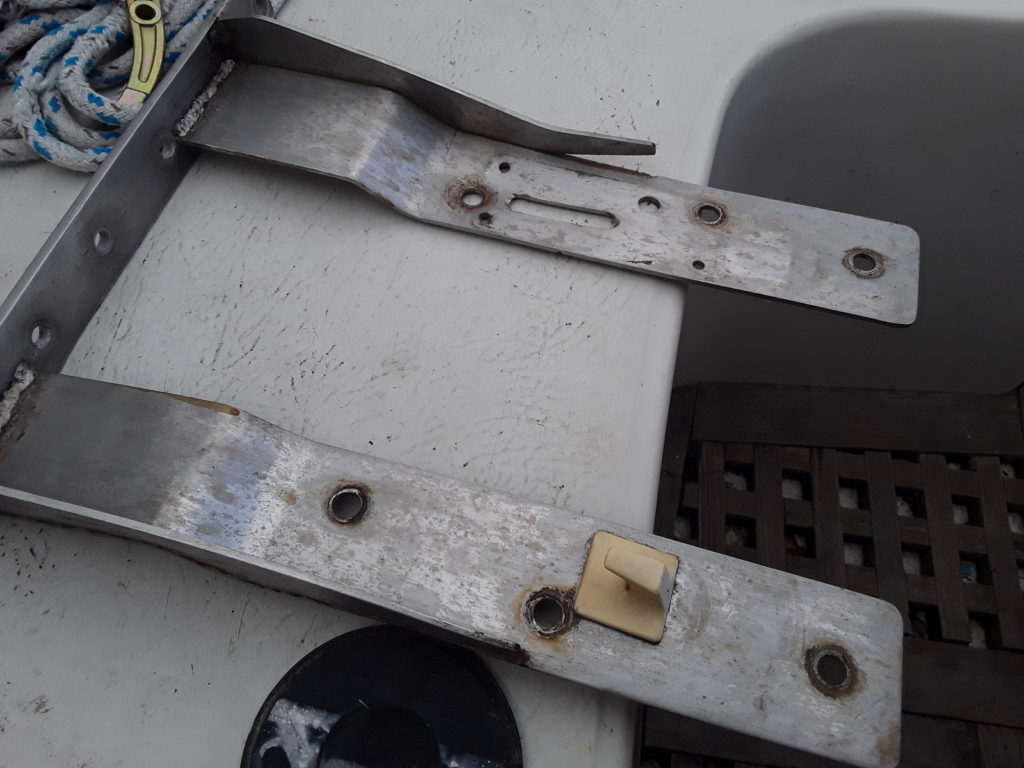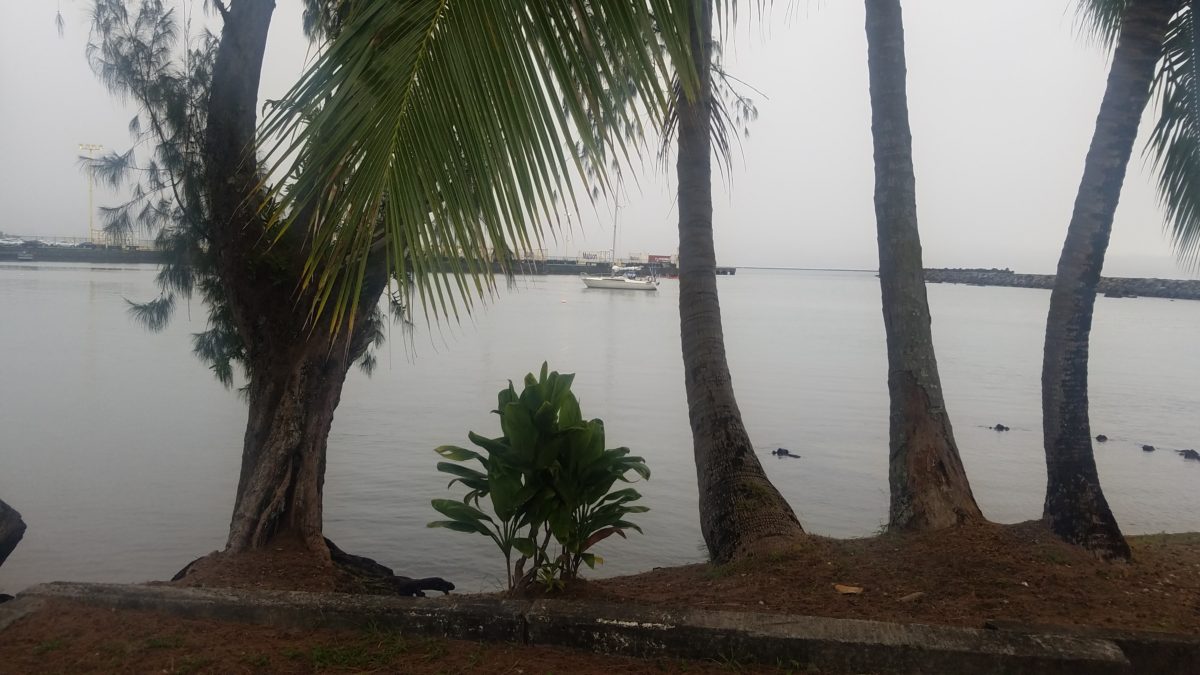We’ve been in radio Bay, Hilo, for a week now. The amount of time it takes to get repairs done and recover from sailing surprises us. Posts, as important as they are to me, and define being productive, cannot be considered critical path, and so they wait.
I also find that I am still, somehow, on Seattle time, so by 7:30 or 8 pm, I am completely beat.
The posts about our journey from Seattle to Hilo will probably not be in chronological order, but instead will be about various topics and jump around in the timeline.
As always, thank you for sticking with us.
Hilo, Hawaii, 25-Oct-2019 – As we dropped the anchor in the middle of Radio Bay, a voice from the shore shouted, ‘‘Caro Babbo, Caro Babbo! ’’
At first, we were certain we misunderstood what we heard. Then, yes!, Chris Morejohn was here. Someone we know was calling us as we made landfall! Somehow, we were someone; someone here in Hilo, where every passage maker lands, knew us.
There are dramatic images of landfalls: The smell of flowers, trees and perhaps earth. Seeing shore birds, and then seeing the island rising over the horizon.
There is, of course, reality.
After 18 days, we, especially Jennifer, wanted to get there. The routing software showed very light winds: another thirty six hours before landfall, if we sailed. Motoring: twelve hours. We’d husbanded our fuel so now was time to use it.
We’ve seen New York city rise out of the horizon as we approached it from Long Island Sound, but with a low cloud cover, for our Hawaiian landfall, we only saw low trees and waves breaking on the shore, nothing more.
We planned to call the harbor master once we dropped anchor, but as we came around the commercial dock into the bay an SUV with yellow flashing lights raced us to the end. A woman in uniform jumped out, ran to the end and called to us.
She asked us our vessel name, and whether we were transient. We replied we were a US-flagged vessel, US crew, last port of call was San Diego. She gave us instructions to the harbor master’s office, telling us to check-in that day.
Once we dropped anchor and unlashed our dinghy, Hilary Hoffmann, we spoke, absurdly, to each other about when we started this morning… what time had we made.
We find we look for the milestones of a land-based life. For nineteen days we have been moving, moving forward, never, even for the briefest moment not moving southwest towards Hawaii. This is a difference. Time for a passage is a continuum, certainly marked by the rising and setting sun, but not demarcated, divided into the hard and fast days we have always lived.

In an earlier post, I had said that I expected Caro Babbo to be a machine, ever moving forward. On the first offshore passage, the seven days from Neah Bay to San Francisco, it certainly didn’t feel that way. Caro Babbo needed constant attention, and the feeling was one of a contraption that needed all our attention to move forward.
This time it was the exact opposite. We really did have the feeling the Caro Babbo was a sailing machine ever moving forward.
Although we had self-steering issues throughout the entire trip, there was no question that this device in which we lived was charging forward.
Years ago, on our first trip to Southeast Alaska, we shared an anchorage with a man named Ray Penson. At the most unexpected moments, weeks and months apart, we would meet Ray again. And were able to cement our friendship when he came to Port Townsend to resupply for his journey to Hawaii.*
On this passage, Ray became our guardian angel, looking at the weather and assuring us, by email, we would do just fine. Ray told us about how he feels when he leaves the sight of land and the world comfortingly shrinks to his boat and the horizon surrounding him.

While it never quite became that for us, by the end of the journey we had transformed into two people living their lives against the backdrop of the ocean and the ever moving forward sailboat, rather than the boat, the ocean and the weather being the focal point of our existence permitting us to do nothing else but survive. (As I read this to Jennifer, she tells me I am dead wrong: she never felt anything but basic survival and could think of nothing else but just surviving until the end. I remember a discussion we had two days before the end of the journey that this had changed and she no longer had these fears, but she tells me I am wrong and this never happened.)
The transformation isn’t in stair steps, as I might have thought, but is slow and continuous, like the trip itself. For us, except as indicated by the clock and calendar, there are no days per se. There is only light and dark, like the cliche, one following the other.
In time, and we’re talking just a few days, the fear of the night dissipated, until it was just daytime but dark.
There are two things to consider here, Jennifer’s amazing bravery in the face of being reduced to tears of terror multiple times a day at the beginning of the trip, and our finding a balance between being overly timid, rather than cautious, and being master our ship in the weather and aggressively charging forward.
As Jennifer noted at the beginning of our trip, every half knot is an entire day of traveling time.
Jennifer’s terror, which was barely describable on the first 7-day offshore passage, divided itself into four fears: fear of the weather, fear of the dark, fear of having me die/never seeing her children again, and as we had mechanical breakdowns, fear of a major breakdown.
The fear of dying had passed by the time we left San Diego. As the trip progressed, one by one the fears fell away until there was only fear of a large mechanical failure, and, to a lesser extent, me dying.
The mechanical failures transformed us from what we had hoped: Jennifer and I as passengers on the ever forward-charging Caro Babbo, into full-time helmsmen standing watches and being careful about sleep deprivation.
Fifty miles into the 7-day passage from Neah Bay to San Francisco, the sacrificial coupling for the servo pendulum oar snapped. We had a new one fabricated in San Diego, but three days out of San Diego the windvane again stopped working. For those who like tales of puzzles, technology and masochism, I will try to write an entire post about our Sailomat 3040.
We came up with a strategy to use our new ev1 autopilot, and not use any of the fuel that we carried with us, or at least as little fuel as possible. We would hand steer during the day while the batteries charged, and have the autopilot steer at night .
Caro Babbo came with a Raymarine autopilot that worked very well. But, the new model has some very clever software which we were told steers remarkably better. I also read that the new gears in the new drive motor were weak cousins of their older brethren. Our original autopilot motor had been in place probably 20 years, but I decided to replace it anyway. There is that decision point between letting sleeping dogs lie and renewing what might fail. The reviews were correct and 8 days, roughly a thousand miles, from Hilo, the electric motor failed forcing us to hand steered the rest of the way. †
During our first Passage, and during much of the first part of this passage, we followed the conventional wisdom and reefed down each night. Blind adherence to such wisdom results in a safe, but quite slow passage. Generally, our speed over ground would drop by 30%.
When we stopped reefing at night as a practice, we found that we were charging along under full sail at night with no ill effects in conditions where we would have reefed during the day. We learned that we were reefing too early.

Caro Babbo will charge forward at close to 7 knots hour after hour, day after day. (We had neglected to take in account the half to three-quarter current heading in our direction so while our speed over ground was easily 7 knots, our speed through the water was indeed greater than our hull speed, but not to the degree to either alarm us or convince us that we are maritime magicians.)
The tip-off that we were not sailing as fast as we should was that we were never even able to make 90% of the polar prediction for the performance of our vessel. We were not being efficient sailors. Once we stopped reefing too early, we were able to keep up with 90% of the predicted performance for Caro Babbo.
The point of all this being, that we crossed from San Diego to Hilo in nineteen days. It is a time that is fast enough that people ask how we did that in a 31-foot boat. Jennifer and I know if we had not been timid and had kept the the route suggested by the routing software we would have made the crossing in seventeen days.
The major reason for the fast time was the routing software from Predict Wind. The second is Caro Babbo, which is a light displacement fin keel sailboat, reaches speed quickly in lighter winds than heavier displacement vessels. If it had been a heavier wind passage, we would have had no advantage.
What was it like living on board for this trip? Read the next post.
–john
* I was also able to have one of those self-satisfied feelings of importance, when I introduced Ray to Brion Toss, whose book Ray was traveling with. I always feel a little bit like Steve Martin in the movie The Jerk, when I can do things like this … I am somebody, not because of what I have done but because of the people who I admire who consider me their friend.
† I didn’t bring the old autopilot because it was in Jennifer’s car when it was stolen. I wasn’t thinking ahead, I had intended to bring as a spare for Kim and James aboard Zingaro, who decided not to come Hawaii in any case.
To replace the autopilot drive motor requires removing the steering wheel, which makes this a moot point for a variety of reason.


Congratulations guys, good to hear you made it safely.
Cheers
Thanks,Drew.
Will be in Hilo another week or two, and then work our way to Honolulu.
I feel as if we’re under a time constraint, when we’re not really, as long as we get there before the winter storm season.
Well done on your arrival in Hilo. Huge relief for sure but what great confidence you must have gained in your abilities as sailors.